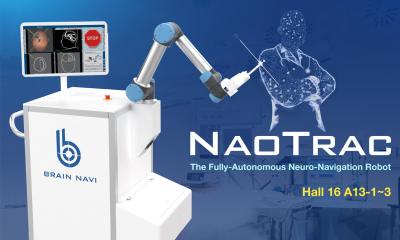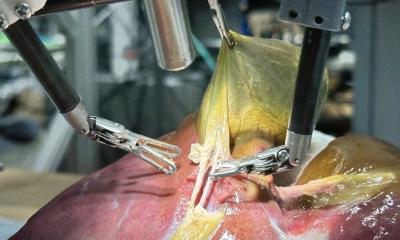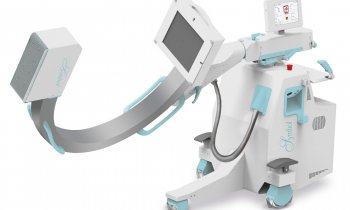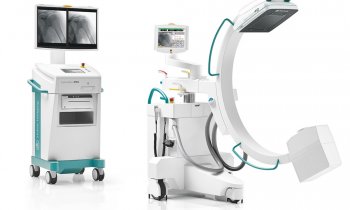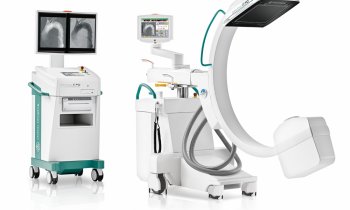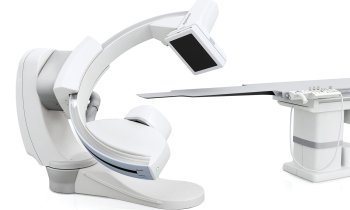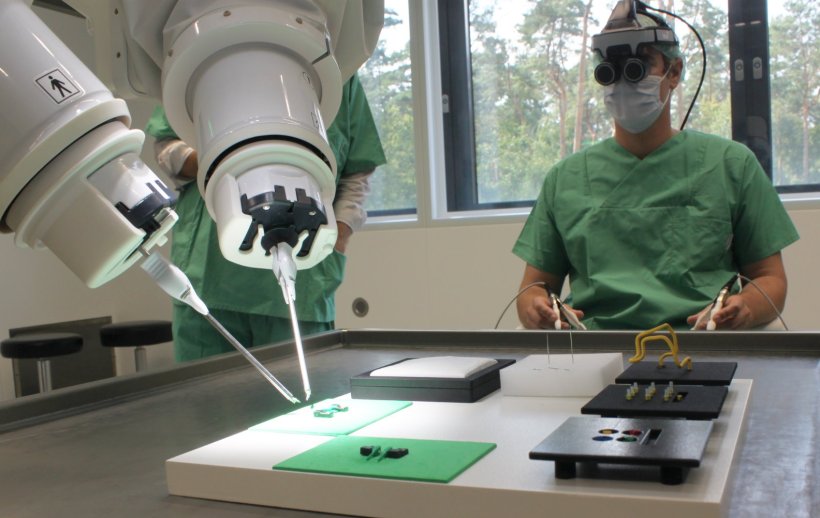
Photo: HiE/Behrends
Article • Digitisation in the OR
Robotic duo pushes boundaries of microsurgery
One robot supports the surgeon’s control of tiny instruments, while another automatically keeps an eye on what is happening: With this novel combination, surgeons in Münster have successfully performed fully robot-assisted microsurgery for the first time. Presenting the new procedure at the Hornheide Specialist Clinic, the experts explain how the interaction of both robotic systems ensures particularly precise interventions.
Report: Wolfgang Behrends
Using two small instruments, Dr Maximilian Kückelhaus controls the needle holders of the surgical robot. Every move the surgeon makes is closely observed – not only by the countless sensors inside the manipulators in his hands, but also by a robot-controlled microscope installed above the operating table. The combination of these two systems is unique in Germany so far and shows great promise to open up completely new possibilities for microsurgery: ‘The new procedure allows us to work much more finely and precisely than is possible with conventional surgical techniques,’ explains Kückelhaus. ‘Every movement of the surgeon is scaled down by up to 20 times, while the natural trembling of the hands is completely filtered out. The instruments are wrist-mounted at the end of the guide rods, which ensures the greatest possible freedom of movement during minimally invasive procedures.’
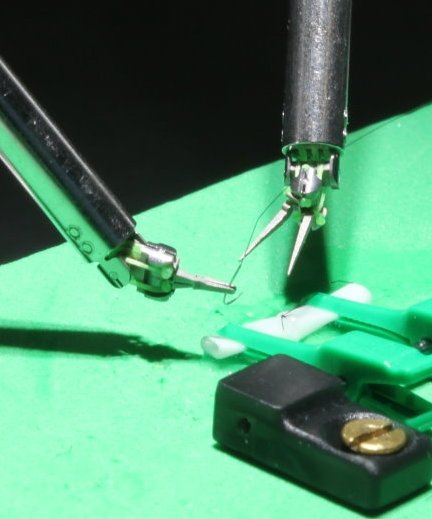
Photo: HiE/Behrends
And with that, the Head of Experimental Plastic Surgery at the Centre for Musculoskeletal Medicine at the University of Münster and Managing Senior Physician of the Department of Plastic, Reconstructive and Aesthetic Surgery and Hand Surgery in Hornheide has only just touched upon the advantages of one of the two robotic systems. In conjunction with the associated microscope, the surgical robot unfolds its full potential: via a head-mounted display, the surgeon can not only view what is happening at great magnification; he can also control the angle of vision of the high-performance camera via subtle head movements. Thus, the robot always focuses on the currently relevant area. Special head gestures can also be used to call up additional functions of the robot without distracting the surgeon's attention from the operating field.
New view on the finer details
The new procedure has only been in use in Münster for a few months, putting the specialist clinic in a pioneering role for fully robot-assisted microsurgery. ‘We can now push into surgical fields where we were previously bound by the limits of human physiology,’ explains Prof. Dr Tobias Hirsch, who developed the method together with Kückelhaus. A chief example of this are lymphatic vessels – some of the structures are hardly visible to the naked eye, let alone treatable with conventional surgical instrumentation. With the new procedure, vessels with a diameter of 0.3 mm can now be sutured.
This additional precision benefits, for example, the treatment of lymphoedema, the transplantation of tissue after complex accidents or diseases such as breast cancer. ‘The smaller the vessels we can connect, the less damage we do to the tissue,’ says Kückelhaus.
We can reverse disfigurements and restore leg functionality by transplanting nerves and tendons. For all these techniques, it's important that we can work more and more finely
Tobias Hirsch
Hirsch gives a practical example: ‘In the past, if we wanted to replace a muscle in the leg, we had to use entire muscles from the back, because their blood vessels were the only ones large enough for sutures. This allowed us to repair the actual defect, but the patient could no longer wear normal shoes afterwards because the muscle was much too big.’ The new procedure allows the use of much smaller muscles that can be fitted more harmoniously. Reconstructive surgery, for example after breast cancer, can also be performed with significantly less damage to the tissue and less scarring.
However, the advantages go beyond mere aesthetics: ‘Patients who previously had to have an amputation can now keep their leg and get fit again more quickly after the operation,’ explains Hirsch, who heads the Plastic Surgery Section at Münster University Hospital and is head physician of the Department of Plastic, Reconstructive and Aesthetic Surgery, Hand Surgery in Hornheide. ‘We can reverse disfigurements and restore leg functionality by transplanting nerves and tendons. For all these techniques, it's important that we can work more and more finely.’ The new robotic system is an important aid for these and many other procedures, the expert clarifies: about 200-300 of the surgeries performed at the site each year can benefit from the robot's assistance. ‘The demand is high,’ Hirsch points out.
Improved ergonomics eases the strain on surgeons
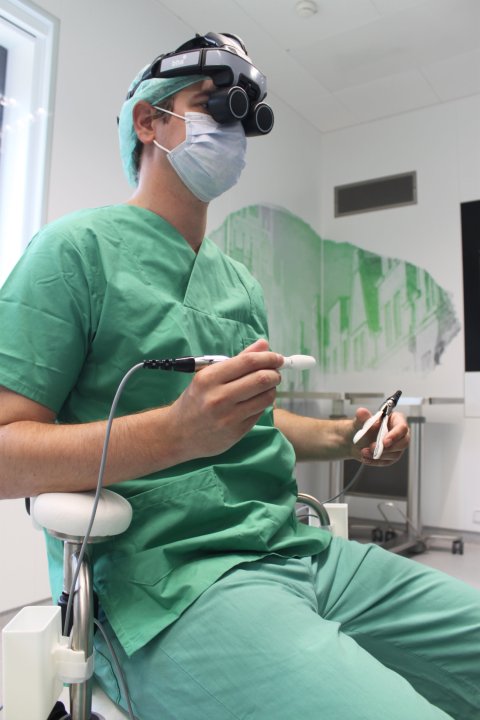
Photo: HiE/Behrends
Developing the robot system, the Münster team worked closely with the manufacturers of the two systems, Medical Microsystems (surgical robot) and BHS Technologies (microscope), over several years. A special emphasis was placed on ergonomics: ‘Especially in microsurgery, an ergonomic position for the surgeon is very important,’ says Kückelhaus. This is because interventions often extend over several hours – operating in a strenuous position will not only break the surgeon's concentration and impede his performance, but also has long-term consequences for the staff: ‘Up to 80% of surgeons have to end their careers prematurely because of problems related to ergonomics,’ the expert says. Hirsch adds: ‘Our initial studies have already proven the positive effects of the new system on surgical quality and ergonomics.’
The new system enables surgeons to operate decoupled from the operating theatre, which is not only more relaxed in posture for the surgeon, but also taps into the potential of telemedicine: specialists from all over the world could connect to the system’s controls, providing their expertise for a given procedure. In the next few months, the surgeons will collect data during further operations. These will be used for the scientific evaluation of the system. An important goal of these studies is, above all, constant improvement in the quality of the operation and ergonomics, the experts conclude.
17.11.2022




